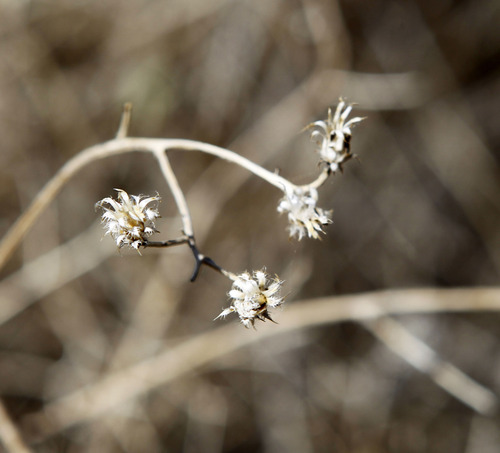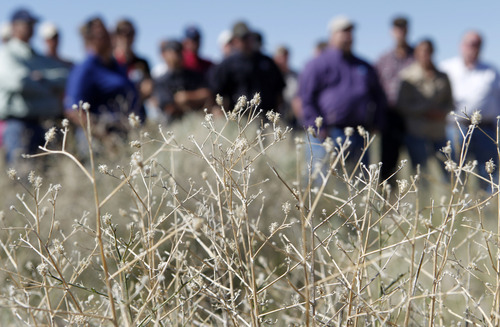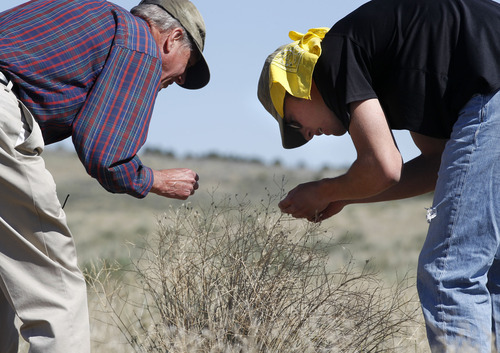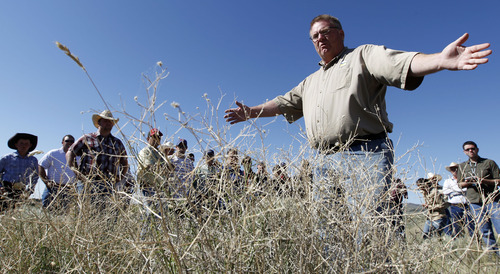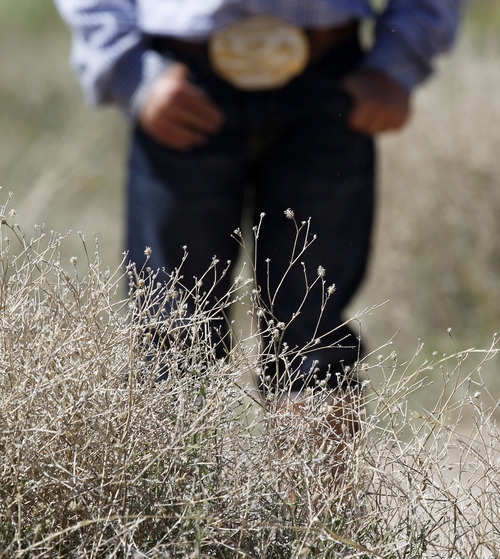This is an archived article that was published on sltrib.com in 2012, and information in the article may be outdated. It is provided only for personal research purposes and may not be reprinted.
Eureka • Jerry Caldwell stands up to his ankles in light-brown weeds, an agricultural scourge that has spread to all corners of Tooele County and beyond.
Squarrose knapweed, a plant native to the eastern Mediterranean area, first appeared in Utah in 1954 and since has invaded nearly 200,000 acres. Each plant lives six years and harbors 3,000 viable seeds, causing several counties in Utah a major headache, Caldwell said.
Weeds such as these choke out native plants, use too much water, can harm livestock and pose a fire risk.
"That's why this is an ongoing problem," Caldwell said.
Caldwell, the Tooele County weed supervisor, has joined nearby counties in requesting $119,000 from a $1 million fund the 2012 Legislature created to help fight noxious weeds.
SB61, sponsored by Sen. Ralph Okerlund, R-Monroe, led to creation of the fund, which the Utah Department of Agriculture administers. If Tooele, Juab and Utah counties receive the grant, it will enable them to eradicate 1,200 acres of noxious weeds.
The bill amended earlier legislation to control weeds passed after the 2007 Milford Flat fire burned nearly 300,000 acres of dry cheatgrass in Millard County, said Kyle Stephens, deputy agriculture commissioner. His department received 60 project proposals totaling $2.2 million for the grant period that begins July 1.
Once grants are awarded, Stephens said the money "can go a long way in controlling noxious weeds and invasive species that are less desirable."
The grant request from Tooele, Juab and Utah counties proposes to use herbicides, weed-eating insects and grass seeds to battle the weeds long-term. Amber Mendenhall, a U.S. Department of Agriculture biocontrol technician, said the money will help create a fund for herbicide as well as seed-eating and root-eating insects that are already in place.
"When you get some root feeders, some seed feeders and some spray guys out here all together, you get a really good effect on controlling your knapweed," she said.
Caldwell said controlling the weeds will be a community effort involving private landowners and government agencies that also have access to some federal weed control funds.
"It's not any one tool that's going to get rid of it, it's going to be a combination of all [of them]," Caldwell said.


